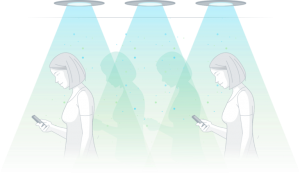IEEE 5G | Light Communications for Wireless Local Area Networking
Our VP of Standardisation Nikola Serafimovski and some of our partners co-wrote a piece for IEEE.com defining LiFi and discussing the growing ecosystem

Defining LiFi
LiFi is defined as an optical wireless broadband access technology that uses the visible and infrared light spectrum to provide bi-directional (transmit and receive) capability. It is able to support uplink and downlink in a point-to-point or point-to-multipoint topology and provide multiuser access in this way. It has been demonstrated that LiFi can offer mobility support for both intra-cell and inter-cell movement link adaptation and handover. There are two principal version of handover:
Horizontal handover– the ability to maintain a data connection to the network as a user moves from once cell to another using the same communications technology, like 4G, Wi-Fi or LiFi; and
Vertical handover – the ability to maintain a data connection to the network as a user changes the principle radio access technology, i.e., moving from 4G to Wi-Fi or from Wi-Fi to LiFi.
The LiFi infrastructure comprises of multiple LED light bulbs that form a wireless communication network, offering a substantially similar user experience to other wireless communication technologies such as Wi-Fi (except using the light spectrum) though horizontal handover. In the future, LiFi could be developed to offer interoperability with Wi-Fi, 4G or other radio frequency (RF) systems where a user can be “opportunistically”, even concurrently, connected to LiFi and other RF to offer the best user experience.
LiFi is unique in that the same light energy used for illumination is also used for broadband data communication. It is a platform technology with the potential to complement and extend existing capabilities of RF technologies. LiFi provides a high-speed, secure, dense and reliable wireless network for enterprise and home environments and acts as an enabler for smart buildings, intelligent transport and smart cities.
How?
Understanding LiFi Technology
The term LiFi was coined by Professor Harald Haas, during a Ted Global Talk in 2011 where he demonstrated LiFi to a worldwide audience for the first time. LiFi extends the concept of visible light communication (VLC) (where even smoke signals can be considered as early forms of VLC) to achieve, specifically:
- high speed;
- bi-directional; and
- fully networked
optical wireless communications. In areas covered by networked ambient lights, the LiFi system supports random user locations. A LiFi system is composed of multiple small cells, also referred to as a LiFi attocell network since the cell sizes have radii of a few meters or less. Therefore, LiFi not only benefits from additional free spectrum, but it also takes the small cell concept to new levels because the light spectrum can and is reused more frequently compared to current mobile radio systems. As a consequence, a higher network capacity can be achieved.
Figure 4 illustrates the key parameters which define LiFi. LiFi transmission speed is in the 10Mbps-1Gbps range with LED lighting and can reach more than 5Gbps with new generations of Solid State Lighting devices.
